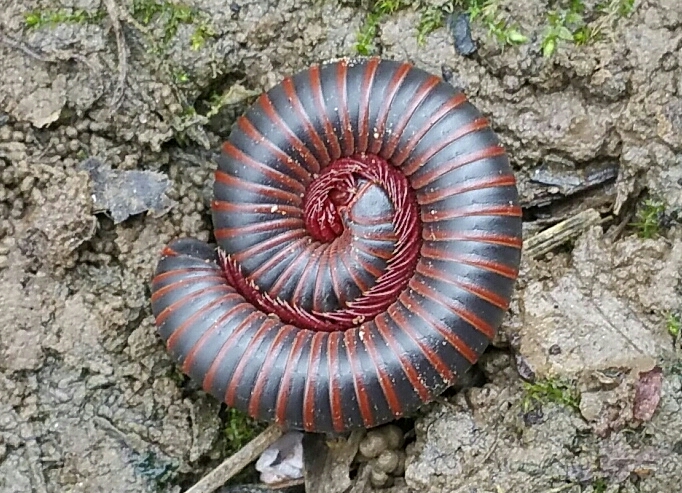
ARTHROPODA
Mandibulata
Chapter Outline

Links to external sites will appear in pop-up windows.
Mandibulata is split into two groups: the subphylum Myriapoda and Pancrustacea. Pancrustacea includes the crustaceans and insects, which will be covered in the following pages. This page covers Myriapoda, which contains four classes: Chilopoda (Centipedes), Diplopoda (Millipedes), Pauropoda and Symphyla.
- Myriapoda
- Chilopoda
- Diplopoda
- Pauropoda
- Symphyla
- Pancrustacea (next page)
| Resources: |
| CHILOPODA |
The class of centipedes. As of 2024, 72 species of Chilopoda have been observed in iNaturalist in the US and 268 throughout the world. Centipedes are differentiated from millipedes (Diplopoda) by the number of pairs of legs they have per body segment. Centipedes have one pair per segment while millipedes have two pairs.
| Resources: |
| DIPLOPODA | |
The class of millipedes. As of 2024, 302 species of Diplopoda have been observed in iNaturalist in the US and 810 throughout the world.
| Resources: |
| PAUROPODA | |
The class of pauropods. Pauropods have not been observed very often in iNaturalist. They are very small. As of 2024, 4 species of Pauropoda (5 total observations) have been observed in iNaturalist in the US and 10 species (12 total observations) throughout the world. However, Wikipedia claims that there are 900 species of pauropods.
| Resources: |
| SYMPHYLA | |
The class of symphylans. Like pauropods, symphylans are rarely observed in iNaturalist. As of 2024, only 2 species (4 observations) of Symphyla have been observed in iNaturalist in the US and 4 species (8 observations) throughout the world. They look similar to some insect's larval forms or even to adult Earwigs with more legs.
| Resources: |
| [ Previous Page ] | [ Next Page ] |